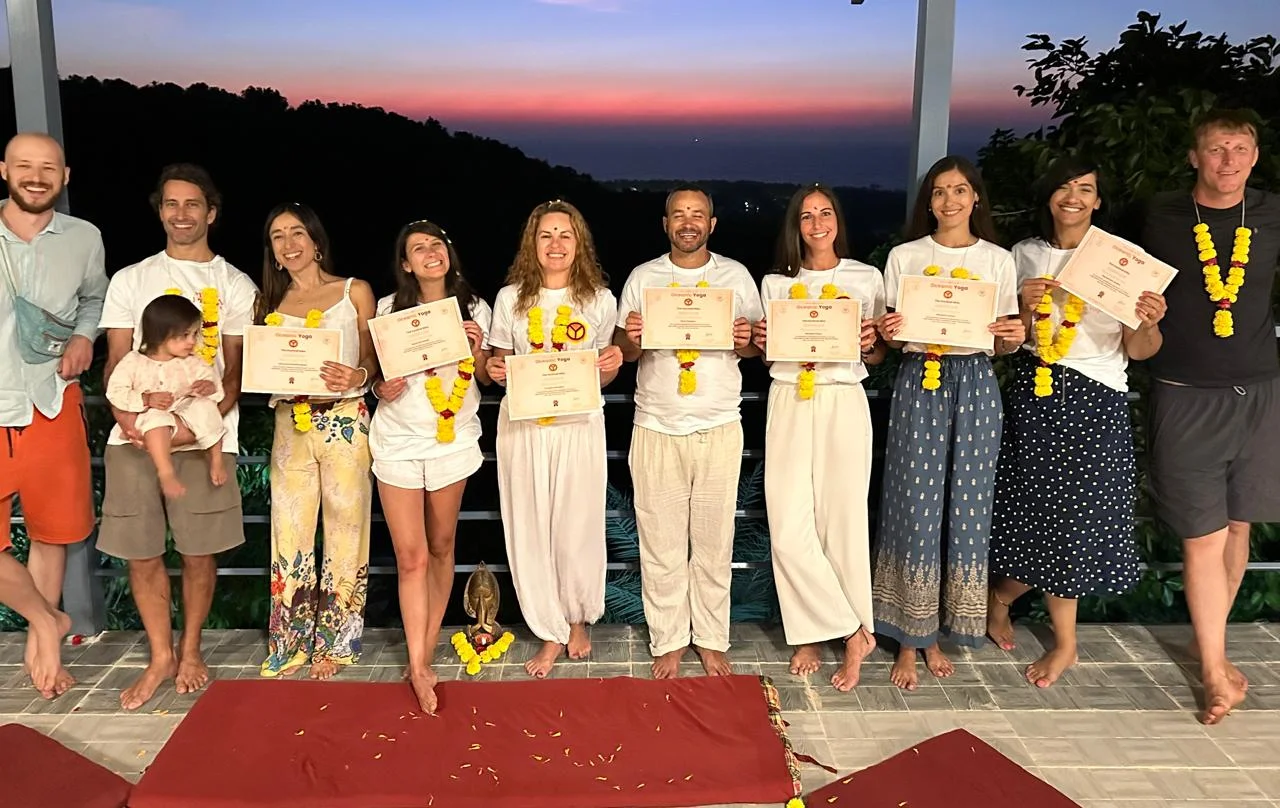The demand for effective and holistic healing practices has never been more pressing than in today’s fast-paced modern world, where stress and anxiety are taking center stage. Among several myriads of modalities available for holistic wellness, somatic yoga, emotional release and holistic wellness outshine for their resounding effect on body, mind, and spirit. Most importantly, such practices improve not only one’s physical health but also direct their focus on the dimensions of emotions and psychology, hence being all-rounded in their approach to healing.
Understanding Somatic Yoga
Somatic yoga incorporates principles of somatic—a discipline concerned with the internal perception of the body—into traditional yoga techniques. Somatic yoga, a term borrowed from the Greek word “soma” meaning “living body”, shifts its focus from external form to the inner experience. It encourages practitioners to listen to their bodies, sense and feel from the inside, and then move with awareness and mindfulness.
Somatic yoga grew from the view that the root of basic wisdom lies in the body. By observing physical sensations, it releases tension, pain, and discomfort patterns. This practice may include slow, conscious movements, breathing, and mindfulness in order to release muscular tension, improve posture, and increase awareness of the body. The focus is going to be less about creating perfect poses, but it will all be about exploring any feelings of the body while moving.
Key Benefits of Somatic Yoga
1. Increased Body Awareness: Paying attention to body and emotional sensations develops greater rapport with the body, thus becoming aware of tension and discomfort to be attended to.
2. Stress Reduction: When you move your boy with passive awareness, movements bring activity into the parasympathetic nervous system, which induces relaxation and lowers stress.
3. Increased Mobility and Flexibility: Over time, practice can lead to increased range of movements and flexibility by gradually releasing chronic tension from muscles.
4. Emotional Release: Enables the release of emotionally bottled-up situations and helps deal with unresolved emotional issues, relationship with the self and others.
Emotional Release
Emotional release refers to the process in which a person is able to release pent-up feelings inside the body over a period of time: anger, sadness, fear, trauma, amongst others. Unexpressed or not acknowledged feelings can show their signals through physical expressions such as chronic pain, tension, illness, etc. Emotional release may be facilitated through various modalities, including but not limited to somatic practices, breathwork, and bodywork. The intention here is to create a non-judgmental space for the expression of feelings.
Key Techniques for Emotional Release
1. Breathwork: Deep diaphragmatic breathing or holotropic breathwork can help an individual access and release stored emotions and is very often associated with altered states of consciousness that promote profound emotional processing.
2. Somatic Interventions: Massage, craniosacral therapy, and other such methods release the emotional blocking that occurs in the muscles and fascia, allowing relaxation and the release of tension to promote emotional flow.
3. Somatic Movement: This refers to practices like somatic yoga where the individual pays attention to their internal bodily sensations to release stored emotions; this may be manifested in shaking, gentle movement, or vocalizations.
4. Expressive Arts: Art, dance, music and painting can be effective and powerful methods for expressing emotions non-verbally and often provide catharsis. Healing art techniques can play an important role in emotional release and it can be understood only after one goes through the journey of it.
5. Inner Child Healing: An inner child healing technique generally consist of guided meditations, creative exercises, and group discussions in order to reconnect with and nurture the inner child. Clay modelling and expressive arts also used to assist in to the depth of the process. Hypnosis is another method used as an assist in this process. Participants revisit their childhood memories, work through unresolved emotions, and learn self-compassion in a comforting environment. This is done with the view of healing past wounds and building emotional resilience.
6. Family Constellation: Family Constellation therapy works by uncovering the hidden dynamics of the family tree. Participants, in a group setting, use dummies or other representing persons to act out the roles of their family members to bring about unresolved issues and ancestral patterns harmful habits. Our loyalty to the generational beings are forced to light and one have to start accepting to let go off such loyalty and at the same time one have to welcome them and keep them in our heart in loving place. This process helps an individual to gain insight, release emotional blockages, and find healing by understanding and realigning their place within the family. This is a very powerful process and Mr. Helinger is considered to be father of this way to healing.
7. Energy Healing: Energy healing works on channelling and balancing the life force energy so that it can enable good physical, emotional, and spiritual states. In this direction, a variety of techniques may be used, including Reiki, acupuncture, and chakra balancing, because they will unblock, restore harmony, and support the natural energy flow of your body. It is a concept aimed at holistic healing of energy blocks inside your being.
8. Mindfulness and Supporting Meditations: There are lots of meditations that help you arrive in the present moment, training your mind to overcome the compulsive jumping to the past and future, hence helping you heal from unknown sadness, depression, anxiety, etc.
Benefits of Emotional Release
1. Physical Relief: Relieves chronic pain, tension, and physical symptoms that may be linked to emotional blockages.
2. Better Emotional Condition: Leads to better emotional balance, reducing anxiety, depression, and feeling overwhelmed.
3. More Self-aware: Allows for greater self-awareness and building of emotional intelligence by paying attention to emotions.
Full-Spectrum Wellness: The Holistic Approach
Holistic wellness incorporates the body, mind, and spirit in the pursuit of overall well-being. Holistic wellness deals with the root causes of health problems, putting into consideration all aspects of a person’s life.
Foundational Principles of Holistic Wellness
1. Body – Mind Connection: Mind and body exists together and body in normal terms is referred as “body-mind” as it can’t be separated. Understands the interrelationship that exists between mental and physical health, proposing practices such as meditation, mindfulness, and stress management as integral parts of the same.
2. Whole-Person as a single unit approach: A whole-person (including approach to health addresses the physical, emotional, mental, and spiritual needs of the person by the use of various or combined therapies, including nutrition, exercises, acupuncture, and herbal medicine.
3. Prevention and Self-Care: One can maintain a lifestyle balance and regular self-care to keep illness at bay and thus remain well for a long time.
4. Natural and Integrative Therapies: This is when natural therapies are used in conjunction with conventional medicine to make healthcare integrative.
Benefits of Holistic Wellness
1. Balanced and Harmonious Life: Encourages balance and harmony in all facets of life, thereby creating well-being and fulfillment.
2. Deeper Healing: Gets to the roots of the issues in health in holistic way and so brings a deeper and long-lasting healing.
3. Empowerment of the Individual: The approach empowers and gives one a sense of control over their life by encouraging an active role in health and well-being.
Somatic Yoga, Emotional Release, and Holistic Wellness
This workshop combines the practice of somatic yoga, emotional release, and holistic wellness into one powerful framework for healing. Somatic yoga provides the tools to connect with the body and release tension, while emotional release practices will be helpful in the processing of unresolved emotions. Holistic wellness knits these practices together in advancing a health approach that is balanced and integrated.
Practical Tips for Integration
1. Begin with Somatic Awareness: Develop somatic awareness through gentle yoga or any other movement practices that focus on bodily sensations coupled with deep breathing.
2. Add Emotional Release Techniques: Incorporate into life various forms of emotional release assists such as breathwork, bodywork, or expressive arts, that make space and time for emotions to process. It is important to take guidance for all these practices as pent up emotion can have an outbreak and hence guidance is mandatory.
3. Welcome Holistic Living: Learn to live a holistic life, incorporating meditation, right nutrition, and supportive therapies into your daily routine; practice self-care and listen to your body.
4. Seek Professional Support: Let a somatic therapist, yoga teacher, or other holistic health professional lead and support you in your recovery process. Reputed yoga schools have experience in handing and guiding people through such processes.
Conclusion
The building blocks of deep, wholesome, and integrated healing are somatic yoga, emotional release, body-mind healing techniques and holistic wellness. It is by paying attention to your body, letting go of your stored emotions, nonjudgmental attitude and taking a holistic approach toward health that you will be able to attain a state of more balance and equanimity, well-being, and realization. It is nurturing and giving respect to the whole person that creates a base for a healthier and more lively life.
I hope this blog is a valuable means of providing insightful and practical tips in the integrated approach to health and well-being. It is a source that guides one on their journey toward comprehensive healing. Oceanic Yoga International yoga school in Goa is providing Somatic therapist training course along with yin yoga teacher training, 200 hour yoga teacher training, yoga Nidra training and many more holistic wellness training programs. One can check on their website www.oceanicyoga.com for more details.



